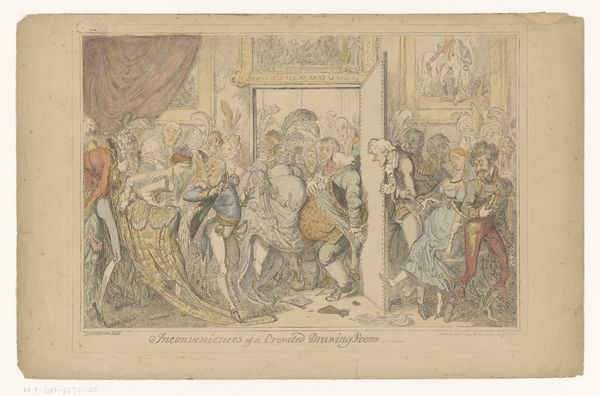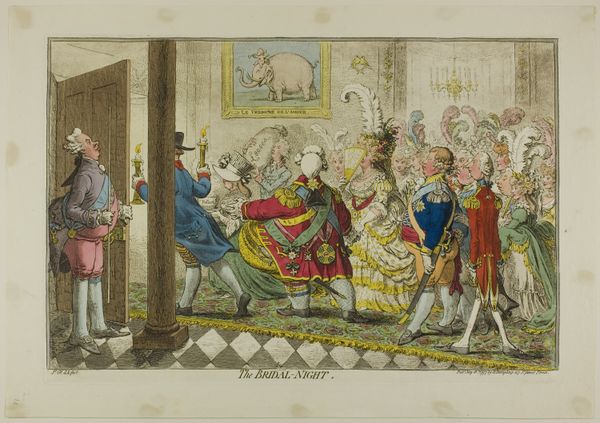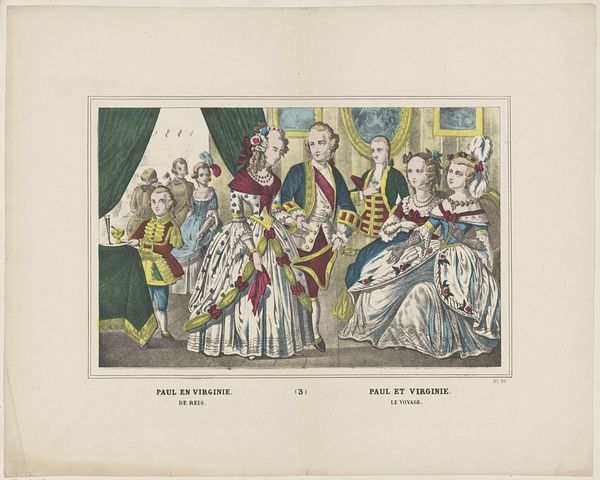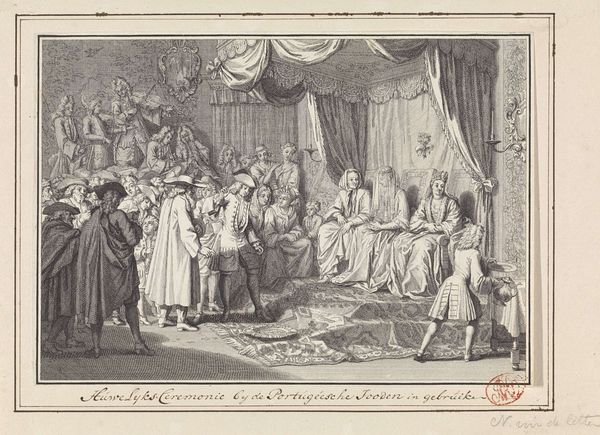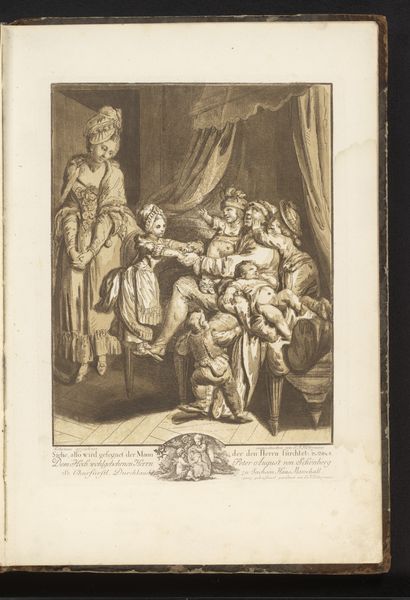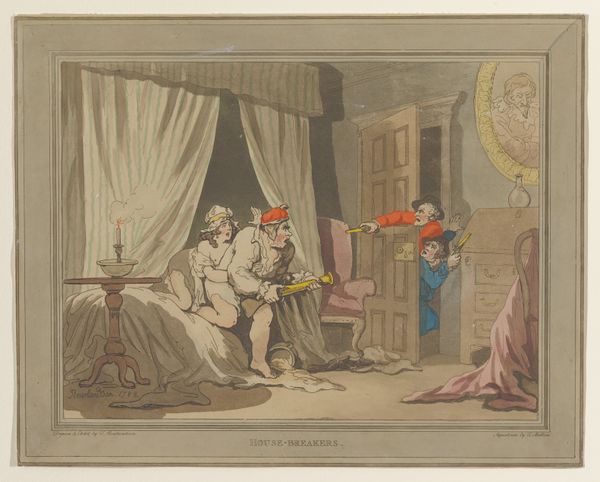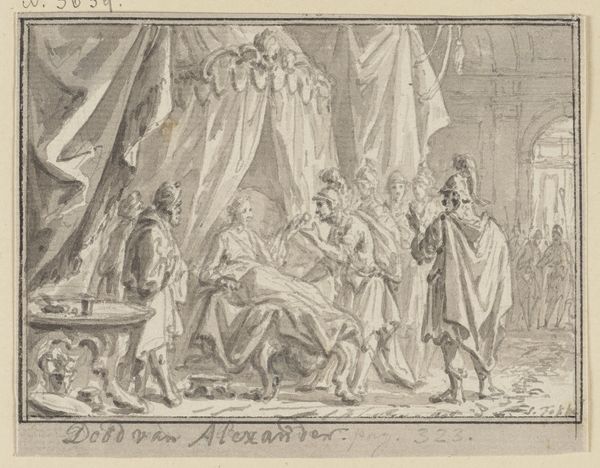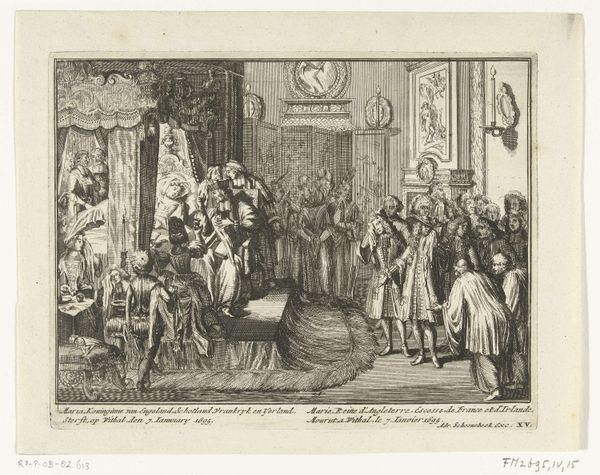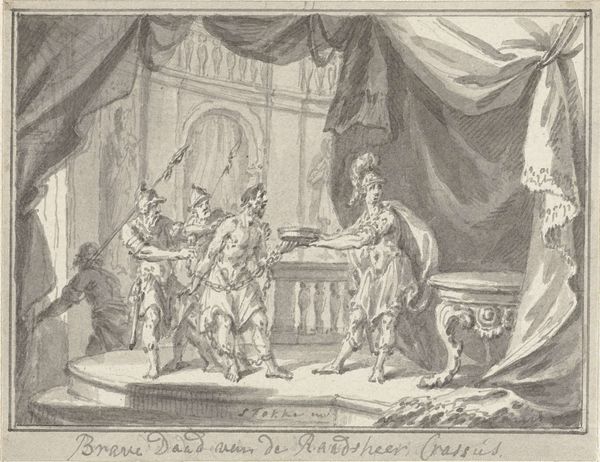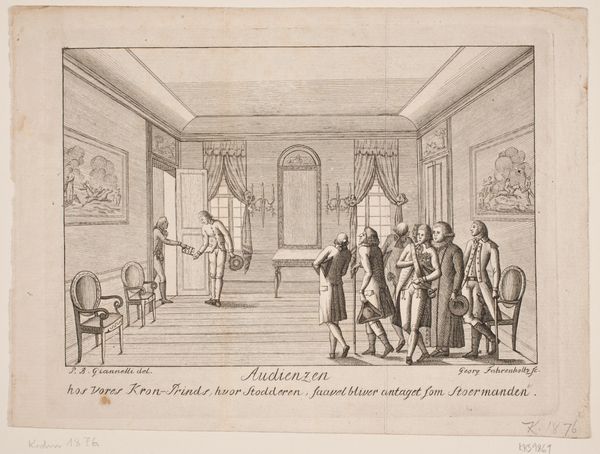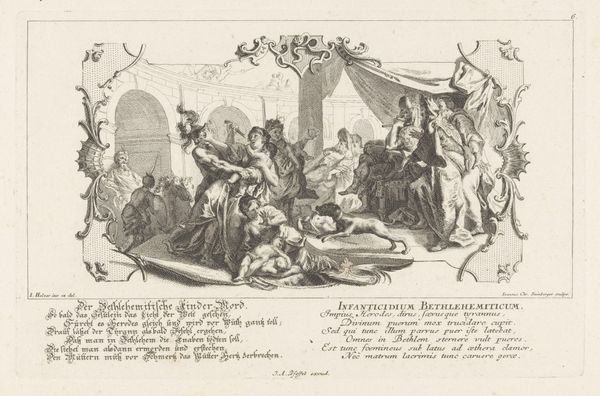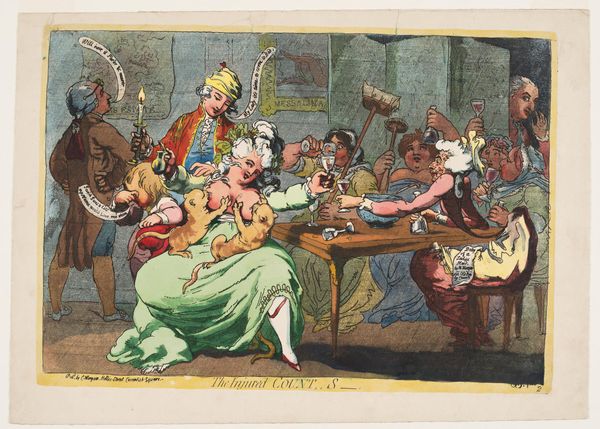
A Master of the Ceremonies Introducing a Partner 26 - 1795
0:00
0:00
Dimensions: 10 1/2 x 14 1/4 in. (26.67 x 36.2 cm) (sheet)
Copyright: Public Domain
Curator: Let's take a look at Thomas Rowlandson's etching from 1795, titled "A Master of the Ceremonies Introducing a Partner," housed at the Minneapolis Institute of Art. Editor: It strikes me immediately as wonderfully satirical. The exaggeration in the figures is superb. I detect notes of Fragonard. Curator: Indeed. Rowlandson employs etching and hand-coloring, which allows for a layered visual experience. The lines define forms and contribute to the overall expressiveness, while the hand-coloring, with its limited palette, subtly guides the viewer's eye across the composition. The materiality here serves a distinctly representational aim. Editor: But isn't it also about the paper? Consider the textures inherent to etching and the particular grade and sizing of the paper itself. The artist chose those elements specifically. The paper shows that this etching comes from an age that preferred to put art in books as illustrations that democratized viewing art at large and to make it affordable. Curator: Good point. It does hint at the mass-produced character of Rowlandson’s era, expanding his potential audience. Now, look at the figures themselves. Notice the exaggerated expressions and the almost grotesque quality of their physiques, especially the Master of Ceremonies. It reads as a biting commentary on social rituals and superficiality of the era. Editor: Exactly. These social rituals, which we can only see glimpses of in history books, were performative gestures. Rowlandson is lampooning the labor put into those performances as the artist displays an intentional tension in the characters. Curator: Also consider how the arrangement of figures and architectural elements create a sense of depth, drawing our eye towards the back of the room, but then abruptly cutting it off, heightening the feeling of confinement within a social world of obligation. It implies constraint. Editor: By capturing this "genre scene", it emphasizes the context—the material conditions of the time are front and center in the work because its etching enables the average public to afford to criticize societal events. Curator: So, ultimately we observe, this artwork uses meticulous structure to offer pointed commentary on 18th-century social rituals. Editor: Yes, and through that, also displays the artist’s labor while highlighting the importance of mass media in shaping societal critiques.
Comments
No comments
Be the first to comment and join the conversation on the ultimate creative platform.
